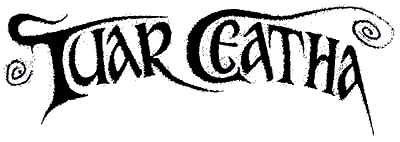

Blazing Beltine
The first of May has been a major date on the Celtic calendar in Ireland virtually since the place was first rained on. And that, as they say, is not today or yesterday.
The old Celts used a three-year lunar calendar based on the feminine life rhythm. This meant the four great festivals were held at nine-month intervals over three years, with the Irish ritual calendar beginning with Samhain on the first of November, followed by Lughnasa on the first of August. Bealtaine arrived on the first of May, and Imbolc on the first of February.
Nowadays having become greedy sort of Celts, we think nothing of saying "to hell with the begrudgers" and squashing the whole lot into one 12-month period along with about 400 other festivals celebrating the evils of drink. But, I suppose, you'll have that.
Preferred Anglo-Saxon May-time customs like maypoles and morris-dancing did not catch on here. Instead, on Bealtaine Eve, huge druidic fires were set- but not lit- on hills, mounds, and rises of any consequence, and it was the custom to quench every other fire in order to give the ceremonial fires full prominence.
One old book on the subject suggested the druids thought it degrading to the gods of nature for this kind of public worship to be performed "in any house made with hands". It may also have something to do with the likelihood of rendering the same house to a pile of ash and cinders.
When the bonfires were eventually kindled it was with the 'tine eigin' (forced fire) prepared on Bealtaine morning. This was done by boring a hole in a plank of oak and inserting an "axle" of the same timber. Then "nine times nine" men were given the job of violently turning the axle to create enough friction for sparks. It is said that if any of these men had committed serious crime such as treason, adultery or murder, the fire would not light.
Once the sparks appeared, a piece of dried moss- of the species that grows on birch trees- was applied and in no time the blaze was away. This fire, seemingly derived directly from heaven, was credited with a plethora of virtues, including the ability to render poison harmless, protect cattle from disease, and frighten the daylights out of witches who were busy casting spells on cattle and stealing their milk.
Once the all-important bonfire was ceremonially lit by careful application of the 'tine eigin', the people got down to eating, drinking 'uisce beatha', singing, dancing, and having fierce craic.
Hours later, towards the close of this party, the Master of the Feast produced a large oatcake baked with eggs and scalloped around the edge. This "bonnach Bealtaine' was broken up and distributed to the gathering. Whoever got the one piece marked with charcoal became 'cailleach Bealtaine' for that year. The unfortunate person was grabbed and threatened with being thrown on the "bone-fire" until others formally intervened - a possible reminder of darker times when live sacrifice was not altogether ruled out. (We won't go into that here in case it frightens the tourists. Anyway, it might only be a vicious anthropological rumour.)
As darkness descended, cattle were driven through the smoke (for their protection), herdsmen danced "southways" around the fire (for their protection), young people ran about with burning branches of broom (for sheer hell of it), and, no doubt, a new generation of Celts were conceived, somewhere within the radius of glowing embers, right across the land.
Doesn't that sound like fun? Why don't we do it all again... just for old time's sake? Beannacht Bealtaine!
Mary Healion-Shelley
|
Home | Articles | Starsigns | Contacts | Recycling | Links | E-mail |
||||||